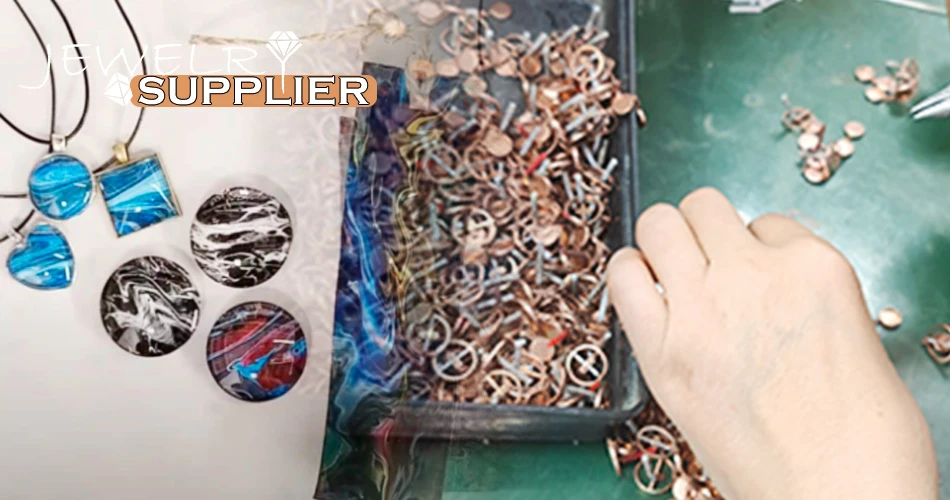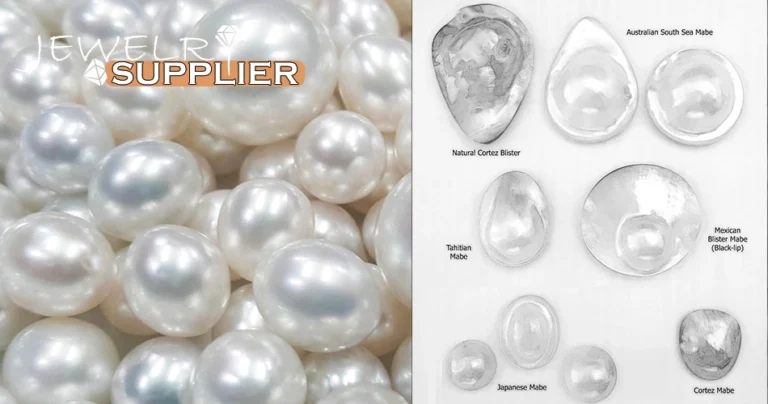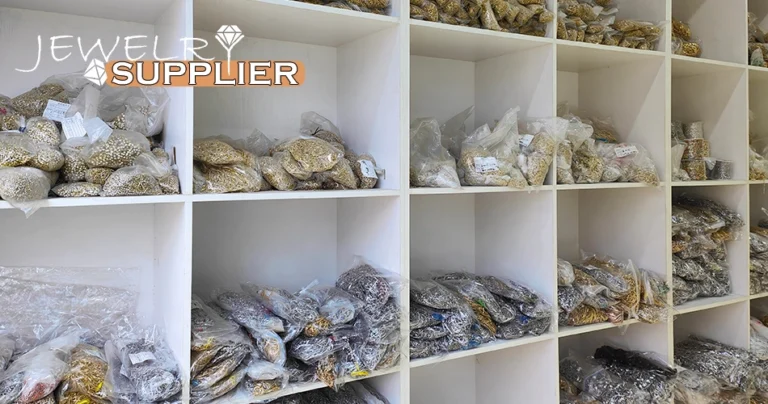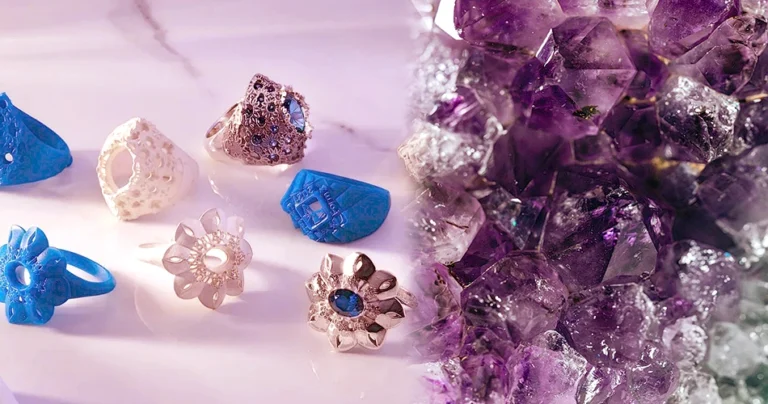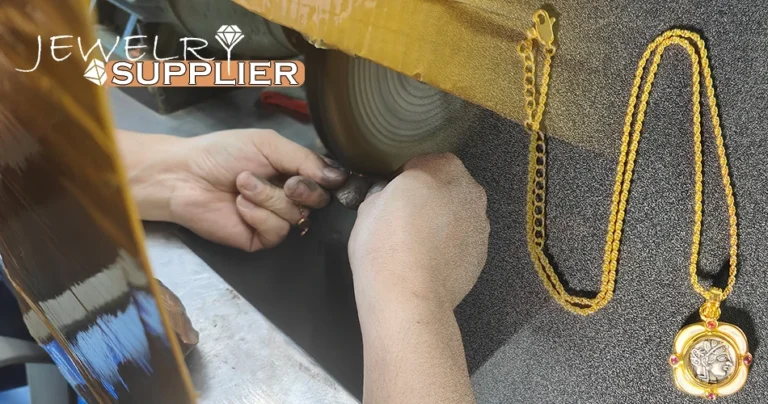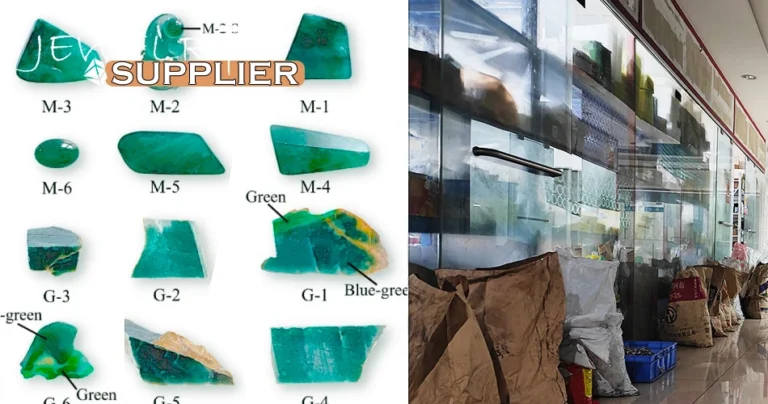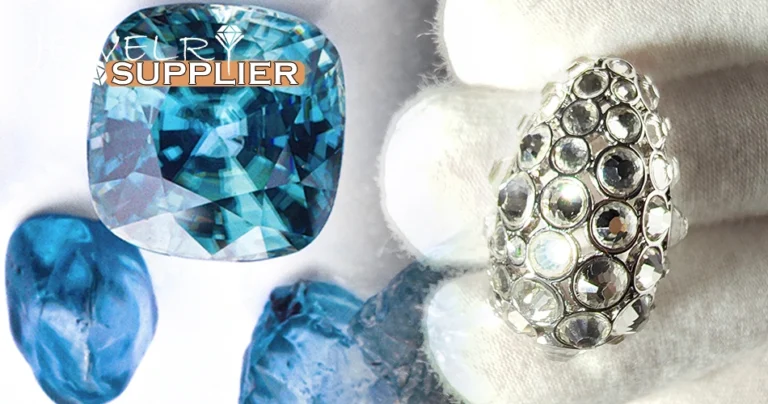Processing Techniques for Acrylic Jewelry
From a raw acrylic sheet to the diverse shapes and sizes of acrylic jewelry, multiple processing techniques are involved. Different processes yield various effects. The processing techniques for acrylic jewelry include design and material selection, cutting, grinding and polishing, heat bending, drilling, bonding, and decorating.
Jewelry supplier, In the design and material selection phase, CAD software or hand-drawn sketches are used to create specific shapes and sizes for the jewelry, along with selecting suitable acrylic materials. The cutting process employs laser cutters or mechanical cutting tools to accurately cut the acrylic sheets into the desired shapes based on the design drawings. Grinding and polishing techniques use sandpaper or polishing wheels to remove the burrs from the cut edges and enhance surface gloss. The heat bending process involves heating the acrylic to soften and bend it into the required shape. Drilling is performed at necessary locations for assembly purposes. Bonding uses specialized adhesives to securely attach acrylic components. Decoration can involve screen printing or heat transfer on the acrylic to add patterns or text.
Go to our jewelry wholesale mall to check the samples.
Design Process Flow for Drawings
Hand-drawn Sketches: Use pencils and paper to sketch preliminary designs from multiple angles, considering the overall appearance. Key dimensions, colors, and other details should be annotated alongside the sketches.
Digital Software Design: Select appropriate software based on design needs, such as Adobe Illustrator or AutoCAD. Create a new document at the correct scale based on the sketches. Use vector tools to ensure clear lines and accurate dimensions. Add color based on design requirements, ensuring harmonious color combinations, and include details like decorative elements and textures. For a more intuitive effect, use 3D modeling software like Blender to create three-dimensional models.
Initial Review: Conduct a self-check to ensure no details are overlooked. Seek feedback by presenting the design to colleagues, friends, or potential customers to gather opinions. Modify and refine the design based on feedback received.
Final Confirmation: Confirm the final design version. Output the appropriate file format required for subsequent production processes, such as PDF or DXF. Prepare all necessary documents for the production phase.
Material Selection for Acrylic Jewelry
For more common materials, please click here to learn.
| Material Name | Properties | Uses |
| Clear Acrylic | High transparency, close to that of glass. | Suitable for jewelry requiring clear transparency, such as clear earrings and pendant necklaces. |
| Colored Acrylic | Available in various colors, ranging from vibrant to soft shades. | Suitable for jewelry needing color coordination, like colorful bracelets and rings. |
| Translucent Acrylic | Between transparent and opaque, creating a hazy effect. | Suitable for jewelry needing soft light penetration, such as glow-in-the-dark earrings and luminous pendants. |
| Patterned Acrylic | Features printed or textured patterns on the surface. | Suitable for jewelry requiring special visual effects, such as patterned bracelets and brooches. |
| UV-resistant Acrylic | Contains UV absorbers to prevent color fading from prolonged UV exposure. | Ideal for jewelry worn outdoors for extended periods, such as outdoor necklaces and bracelets. |
| Impact-resistant Acrylic | Offers better impact resistance than regular acrylic, making it less prone to breaking. | Suitable for jewelry needing high durability, such as sports bracelets and outdoor earrings. |
| Fire-resistant Acrylic | Provides certain fire-resistant qualities, slowing down the burning rate to some extent. | Suitable for jewelry where fire safety is a consideration, like accessories worn in public places. |
| Eco-friendly Acrylic | Meets environmental standards and does not contain harmful substances. | Suitable for all types of jewelry, especially for children and individuals with sensitive skin. |
Cutting and Engraving Techniques for Acrylic Jewelry
Cutting Process: Utilize high-precision laser cutting machines to cut the required shapes according to design patterns. Various tools, including manual cutting knives, mechanical cutters, and laser cutting machines, can be used.
Manual Cutting: Best for simple shapes, using a sharp blade to cut along the line. This method is mainly suitable for smaller-scale processing or intricate operations, but the processing time is longer.
Mechanical Cutting: Addresses the slow efficiency of traditional hand cutting, offering precise cuts that reduce labor costs and speed up acrylic jewelry processing.
Laser Cutting: Provides high-precision cutting of acrylic sheets using laser beams to melt and shear the material. Compared to manual and mechanical cutting, laser cutting is faster and more convenient, suitable for large-scale acrylic jewelry production.
Engraving Process: After the initial cutting, acrylic sheets are engraved according to the product’s shape requirements, creating different graphical shapes.
Laser Engraving: Uses laser beams to engrave patterns and text on acrylic materials. This method allows for various complex designs with high precision and efficiency, featuring non-contact processing, no tool wear, and the ability to handle intricate shapes with high quality.
Mechanical Engraving: Involves using mechanical devices to engrave acrylic materials. This method is suitable for large-scale production and batch processing, completing numerous identical patterns and texts quickly and accurately. Mechanical engraving is efficient and cost-effective for mass production.
Grinding and Polishing Techniques for Acrylic Jewelry
Grinding: Aims to use sandpaper or polishing wheels to remove burrs from cut edges, creating a smooth surface. This process removes burrs from cutting and engraving, preparing the surface for subsequent polishing. Sandpaper ranges from coarse to fine, typically starting from P80 and transitioning to P600 or finer. Grinding wheels are suitable for large or hard-to-reach areas.
Grinding Steps:
Use coarser sandpaper (P80-P120) to remove obvious burrs and scratches.
Use medium grit sandpaper (P240-P400) for further smoothing.
Final grinding with finer sandpaper (P600 and above) to prepare for polishing.
Polishing: Aims to enhance gloss, making acrylic jewelry surfaces smooth and shiny while further eliminating small scratches. Polishing wheels hold polishing compounds for the task, using acrylic-specific polishing pastes. For fine areas, cloth wheels can be used.
Polishing Steps:
Choose an appropriate polishing wheel based on the area to be polished and apply a suitable amount of polishing compound.
Use a polishing machine or manually operate the polishing wheel, applying moderate pressure and speed.
Regularly check the polishing effect to ensure a smooth and shiny surface, repeating as necessary until the desired gloss is achieved.
Drilling Techniques for Acrylic Jewelry
Drilling is performed at necessary locations for assembly or stringing. The appropriate drilling method depends on the specific needs and conditions of the jewelry, including thickness, hole size, and precision requirements. Laser drilling and CO2 laser drilling are particularly suitable for fine processing of acrylic jewelry due to their high precision and stress-free characteristics.
Laser Drilling: A high-precision, burr-free method suitable for detailed work on jewelry. It avoids mechanical stress, ensuring stability and preventing cracks and deformation during processing, with the advantages of high speed, accuracy, and surface finish.
CO2 Laser Drilling: A specific type of laser drilling using CO2 lasers, characterized by high power, excellent beam quality, and stability, making it ideal for acrylic jewelry processing. When setting drilling parameters, the acrylic’s properties and required hole sizes should guide settings for laser power, speed, and frequency to ensure optimal drilling results.
Heat Bending Techniques for Acrylic Jewelry
For jewelry requiring three-dimensional shapes, acrylic sheets are heated and bent into the desired forms. Heating equipment is used to heat the edges of acrylic to the softening point, typically around 95°C. Ensure even heating to avoid localized overheating that could lead to deformation or damage. Bend the softened acrylic along a straight line, using molds or fixtures for shaping.
Secure the bent acrylic with fixtures or molds to maintain its shape, allowing it to cool naturally to room temperature to avoid stress concentration from rapid cooling. If needed, further grinding or polishing of the edges can be performed to ensure a smooth finish. Verify that the heat-bent acrylic meets design requirements, ensuring no cracks or deformation. Heat bending utilizes heat to soften acrylic materials, bending them into desired shapes according to design specifications. This process not only creates unique shapes but also ensures the structural stability and aesthetics of the jewelry, fully leveraging the flexibility and plasticity of acrylic materials.
Bonding Techniques for Acrylic Jewelry
Use specialized acrylic adhesives to bond different components together. Choose adhesives suitable for acrylic materials, such as acrylate-based adhesives. Clean the surfaces to be bonded with alcohol or acetone, ensuring they are dry, free of grease, and dust. Determine the bonding locations and shapes based on design drawings or templates.
Bonding Steps:
Position the acrylic components to be bonded according to design requirements, ensuring accuracy.
Use a syringe or fine brush to evenly apply the adhesive on the bonding surfaces.
Firmly press the two components together, ensuring full contact on the bonding surface.
Use clamps or fixtures for temporary fixation to ensure even distribution of the adhesive.
Allow sufficient time for the adhesive to cure completely, following the adhesive’s instructions. Cure times vary depending on adhesive type and environmental conditions, typically ranging from minutes to hours. Proper execution of the bonding process not only ensures the structural stability of the jewelry but also enhances its aesthetics and durability.
Screen Printing or Heat Transfer Techniques for Acrylic Jewelry
Screen printing is a common printing method that uses a screen to evenly apply ink onto acrylic jewelry, creating desired patterns or text. This technique is suitable for printing colorful designs and logos, offering advantages of simplicity, speed, and low cost. The ink is pressed through the screen, transferring the same pattern onto the acrylic surface, achieving cost savings and desired effects

